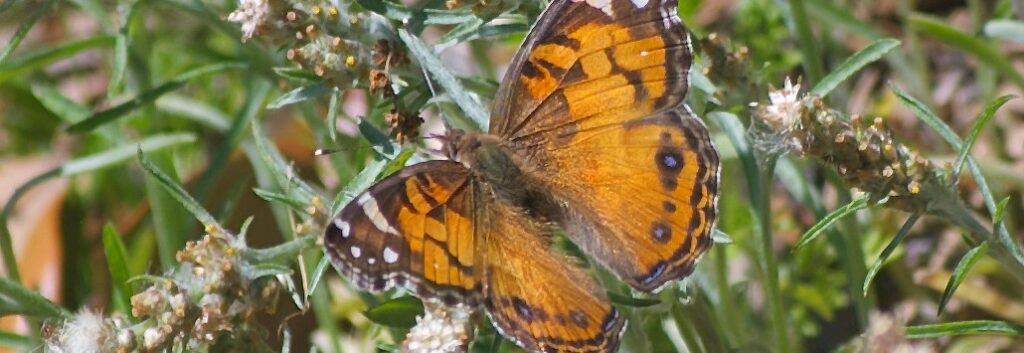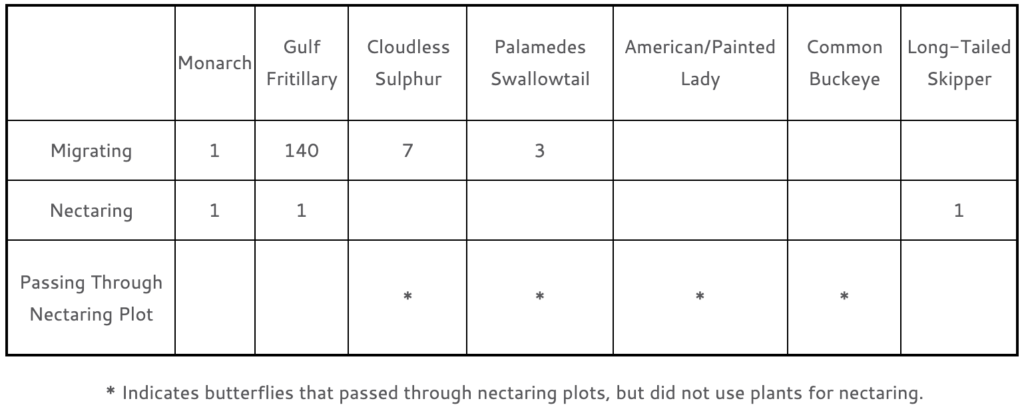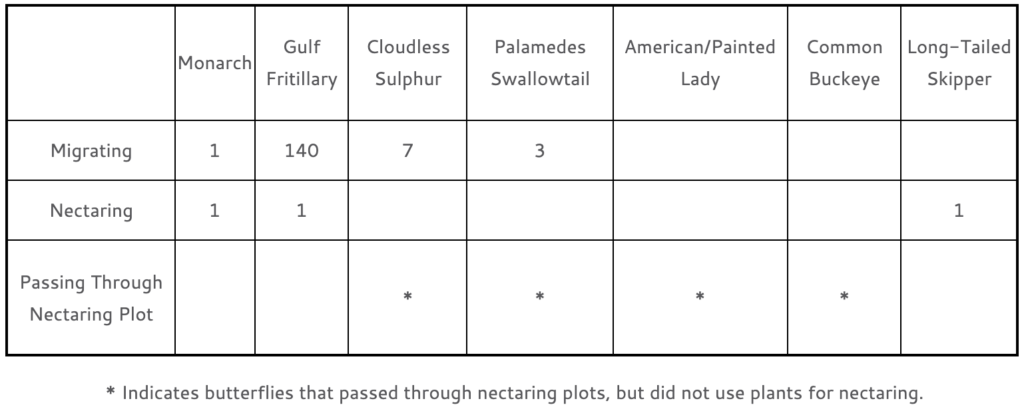BUTTERFLIES OF THE ATLANTIC FLYWAY ALLIANCE (BAFA) SURVEYS

BUTTERFLIES OF THE ATLANTIC FLYWAY ALLIANCE
A broad range of public and private partners on Georgia’s coast are engaged in actions to understand and support migratory butterfly species along the Atlantic Flyway, including the Monarch Butterfly (Danaus plexippus). Although migratory butterfly movement has been observed for many years along the Georgia coast, data have not been systematically collected and shared to provide useful information to conservation land managers and the general public.
Native pollinator populations are declining nation-wide. The National Strategy to Promote the Health of Honey Bees and Other Pollinators includes a Pollinator Research Action Plan (2015) aimed at reducing the impact of multiple stressors on pollinator health. The strategy identifies current needs for “conducting research to understand, prevent, and recover from pollinator losses; expanding public education programs and outreach; increasing and improving pollinator habitat; and developing public-private partnerships across all these activities.”
Locally, the Monarch Butterfly is listed as a “High Priority Animal” in Georgia’s 2015 State Wildlife Action Plan. Significant numbers of this butterfly are known to fly southward in the fall, following the Atlantic Coast in movement patterns similar to those seen in migratory birds. The Atlantic Flyway, and especially the coast of Georgia, merit further study to understand the migratory butterflies that use this area.
Given the vital need for documentation of the presence, abundance, and habitat requirements of native pollinators in our southeast Atlantic Flyway region, the Butterflies of the Atlantic Flyway Alliance (BAFA) was formed to bring together conservation land managers and citizen scientists in Georgia to collect data. Through five years of surveys in the Coastal Georgia counties, BAFA will gather the information necessary to create land management recommendations for property owners and managers in our region. Collected data will include migratory movement and nectar and host plant utilization. The organization is currently focusing on seven representative butterfly species: American Lady (Vanessa virginiensis), Cloudless Sulphur (Phoebis sennae), Common Buckeye (Junonia coenia), Gulf Fritillary (Agraulis vanillae), Long-tailed Skipper (Urbanus proteus), Monarch, and Painted Lady (Vanessa cardui).
The initial butterfly surveys conducted during fall 2018 documented over 3,000 Gulf Fritillaries and hundreds of Cloudless Sulphurs and Monarchs traveling along the Georgia Coast. Migration rates peaked during early-to-mid-September. The most-utilized, and also one of the most abundant, native nectar plants was Sweetscent (Pluchea spp.) also known as Camphorweed.
By fall 2019, eight conservation organizations sharing common concerns and habitat management goals for the region have partnered with BAFA to collect data at eleven locations along the coast.
BAFA Survey Sites and Partner Organizations:
Other Partnerships:
BAFA’s mission to understand and conserve butterfly populations goes hand-in-hand with public education. Nearly all of the data collected through the initiative is accomplished by citizen scientists, people from the local community who joined BAFA to learn more about their local pollinators and to help ensure butterflies have a bright future in coastal Georgia. Through data collection, public engagement, and future land management recommendations, BAFA aims to safeguard sustainable butterfly populations.
2022
In total, Stewardship Director Stephanie Knox, Land Steward Technician Rebecca Cushing, and other Butterflies of the Atlantic Flyway Alliance (BAFA) volunteers, counted six (6) different species of butterflies (over 100 individuals) in individual research plots throughout the Preserve. Other butterflies were spotted outside of research plots but were not added to the data collected.

2021
In total, Cannon’s Point Preserve Manager Stephanie Knox, and other Butterflies of the Atlantic Flyway Alliance (BAFA) volunteers, counted seven (7) different species of butterflies in individual research plots throughout the Preserve. Other butterflies were spotted outside of research plots but were not added to the data collected.

2020
In total, Cannon’s Point Preserve Manager Stephanie Knox, and other Butterflies of the Atlantic Flyway Alliance (BAFA) volunteers, counted seven (7) different species of butterflies in individual research plots throughout the Preserve. Other butterflies were spotted outside of research plots but were not added to the data collected.

From Saturday, May 24 - Monday, July 28, Cannon's Point Preserve will be open with LIMITED access. Read More